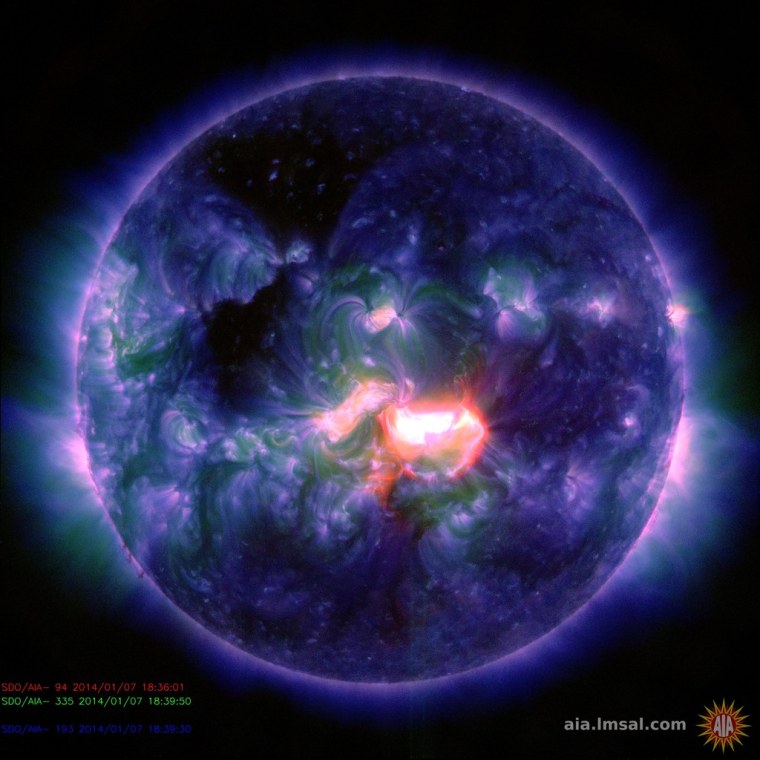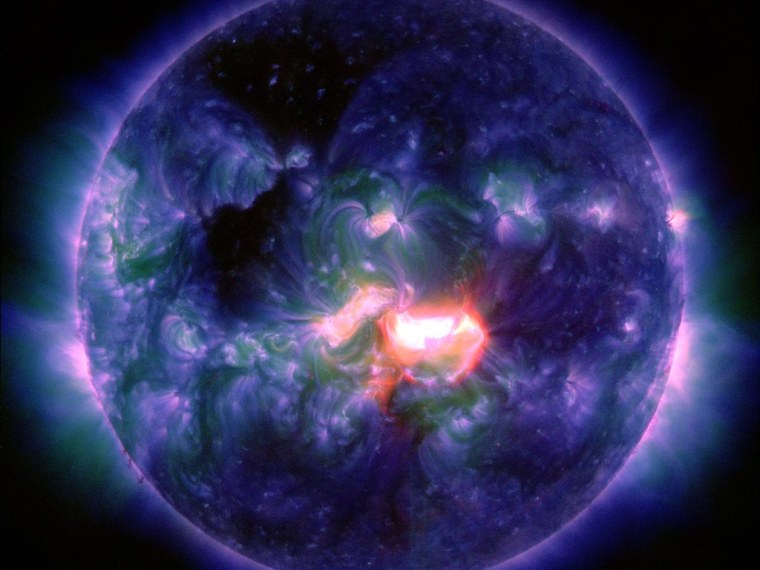
The sun erupted with a powerful solar flare on Tuesday, disrupting radio traffic and sending a blast of electrically charged particles our way. And there may be more blasts to come.
The X1.2-class flare was recorded by sun-observing satellites, including NASA's Solar Dynamics Observatory, at about 2:32 p.m. ET. X-class flares are the strongest category of solar outbursts, although X1.2 is toward the category's low end. The National Oceanic and Atmospheric Administration's Space Weather Prediction Center said the flare sparked a strong radio blackout.
For days, space weather forecasters have been bracing themselves for solar eruptions from a large active sunspot region called AR1944. This region has now turned to face Earth directly, which means strong solar flares are likely to send storms of charged particles — also known as coronal mass ejections, or CMEs — heading straight for us.
Strong solar storms can damage satellites and electrical grids. One such outburst in 1989 knocked out power for a wide swath of Quebec. And don't get us started about the superstorm of 1859!
The geomagnetic storm generated by Tuesday's flare won't be that disruptive, but it could have an impact. NASA expects the CME to sweep over us somewhere around 3 p.m. ET Wednesday. The current space weather report says there's a chance we'll see more X-class flares through Friday.
Although space storms can be damaging, they can be beautiful as well: Be on the watch for enhanced northern lights over the next couple of nights. To get the auroral forecast for your area, check out the maps at SpaceWeatherLive.com. And for cool views of the aurora, keep an eye on SpaceWeather.com.
More auroral glories:
- Rivers of northern lights flow over Swedish lake
- Space station life imitates art of 'Gravity'
- NBC News archive on auroral displays
Alan Boyle is NBCNews.com's science editor. Connect with the Cosmic Log community by "liking" the NBC News Science Facebook page, following @b0yle on Twitter and adding +Alan Boyle to your Google+ circles. You can also check out "The Case for Pluto," my book about the controversial dwarf planet and the search for new worlds.
